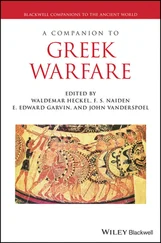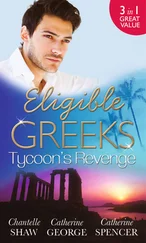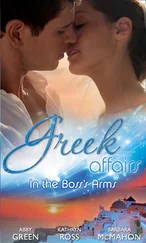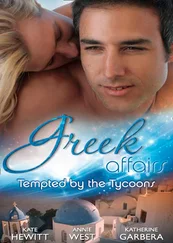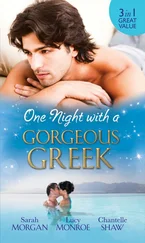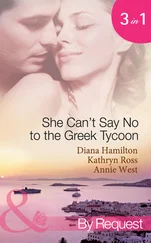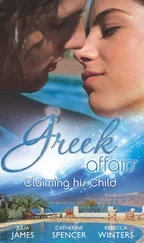A volume of this size owes a great deal to many. I am grateful to the contributors themselves for their hard work and wise insights, to the external readers, who made many helpful suggestions on structure and scope, and of course to those at Blackwell-Wiley who guided it through the process of publication. My editorial work was done during a period of research leave funded by the Leverhulme Trust, and I am grateful to the Trust for their generous support. Particular thanks are due to Bill Allan, for his support throughout, and for the index.
SECTION 1 CONTEXTS
CHAPTER 1 The Lyric Chorus
Lucia Athanassaki
The chorus was a group of male, female, or male and female adults, adolescents, or children who sang and danced simultaneously in honor of the gods at periodic Panhellenic and local festivals or smaller cultic events. 1Choruses also celebrated in song and dance important moments and achievements of mortals, such as weddings, athletic victories, civic and religious appointments, and any other activity that a community or a family thought worth celebrating and/or commemorating. Even when choruses celebrated human achievements, however, gods enjoyed an equal, if not greater, share in the eulogy, because divine favor was considered a sine qua non for human success and poets were well aware of the divine wrath and punishment awaiting those who did not pay them proper tribute. 2
Traditional songs were available for the wide range of cultic and social occasions, but the great number and variety of Panhellenic and local occasions in the metropolitan and colonial Greek world, the agonistic spirit, and the prosperity of Greek cities during the archaic and early classical period gave rise to a booming song culture that fostered great artistry, creativity, and innovation. 3The Panhellenic and high-profile local festivals were the venues where poets had the opportunity to display their talent and choruses their virtuosity. Like poets, choruses also traveled to Panhellenic and other major sanctuaries for theoric purposes, 4but these also had their own resident choruses, often female. The Homeric Hymn to Apollo offers a precious early testimony of such a chorus on Delos, the famous Deliades , who are also epigraphically attested. 5
The gender and number of choreuts 6varied according to the occasion, the honorand, and in all likelihood the region. Apollo, for instance, was worshipped by male, female, and mixed choruses in Delphi, Athens, Delos, and elsewhere. 7Similarly, male choruses performed dithyrambs for Dionysus in Athens, whereas the god is frequently imagined as leading his female Bacchic choruses in Thebes and Delphi. Whereas Attic drama initially required 12 and later 15 choreuts for tragedy and 24 for comedy, the number of choreuts that performed on different occasions in different places must have varied greatly. 8Fifty seems to have been the usual high number, three the low number; divine choruses who were the models for human choruses ranged from fifty (Nereids) to three choreuts (Graces). Athenian dithyrambic choruses required fifty choreuts, but our early sources are not particularly enlightening concerning the number of choreuts that performed other genres, such as hymns, paeans, and partheneia. The young Spartan women who performed Alcman’s composition in Sparta, for instance, seem to give the number ten for the members of their chorus. Another famous performance in honor of Apollo on Delos, the song-dance of Theseus’ fourteen male and female companions, who imitated the hero’s movements in the Labyrinth, gives us the number fifteen for a mixed chorus of young men and women. 9
The choral audio-spectacle, much admired in antiquity, is lost for us. As we shall see, however, we can reconstruct aspects of it thanks to self-referential choral statements in the texts that have survived. Epic and dramatic descriptions of choruses, sculptural and vase representations, and later accounts and treatises add substantial information on the nature and the appeal of choral performances. 10
The Great Masters of the Archaic and Early Classical Periods
Countless traditional songs must have been sung and danced, and countless new song-dances must have been produced in the Greek cities over the centuries. Of this prolific output little has survived: names of great masters, titles of their songs, and a small number of their poems—mostly in fragments.
Probably all nine poets who were included in the Alexandrian canon of the nine lyric poets tried their hand at choral compositions. Alcman, who lived and composed in 7th-century cosmopolitan Sparta, became famous for his partheneia , choral compositions for female choruses ( AP 9.184.9). 11In 1855 a papyrus found in a tomb in Saqqara by Auguste Mariette brought to light a precious song that Alcman composed for a Spartan female chorus. If we take into account the importance of female choruses in the religious and social life of the Greek polis , the surviving fragments are frustratingly few. I shall come back to song-dances for young women in the next section.
At the other side of the Aegean the most famous female poet of the ancient world, Sappho, probably composed songs for both solo and choral performances on Lesbos. 12In the next section I shall look at some evidence that depicts Sappho as a chorodidaskalos , i.e., chorus teacher/leader. The other famous Lesbian poet, Alcaeus, is mostly associated with compositions for the solo voice, but some scholars have suggested the possibility of compositions for choral performance in ritual contexts. 13
According to the 10th-century ad dictionary Suda, Stesichorus was the first to set up a chorus to cithara-singing ( Sud . Σ 1095 (iv 433 Adler)). This testimony together with the length of Stesichorus’ compositions gave rise to the view that Stesichorus was a citharode, but this view has been persuasively refuted. 14If the testimony claiming that Stesichorus was the first to set up a chorus has any authority, the reference must be to some Stesichorean choral innovation and its impact. In all likelihood he made his reputation leading his choruses first in Western Greek festivals and then in Spartan and Athenian festivals. 15Another Western Greek, Ibycus from Rhegium, also composed for choruses and drew his inspiration from Homer and the epic cycle. 16He spent time at the court of Polycrates on Samos and took part in the tyrant’s symposia which must have been the venue for his homoerotic songs, probably composed for a solo voice. Another famous poet associated with Polycrates was Anacreon from Teos. Anacreon is thought to have composed love songs for the symposium, but it is possible that some of his hymns were meant for choral execution. Moreover, it has been shown that he was perceived as a choral poet by the later Anacreontean tradition. 17
Very few fragments survive of Simonides’ choral compositions, but as we shall see in the next section he became legendary for his fitness as a chorodidaskalos in his old age. The number of his victories in dithyrambic contests also became legendary: an epigram claims that he won fifty-six (XXVII Page). Some scholars have thought that this number too high, but it sounds right if we take into account the poet’s longevity and Panhellenic success. 18
We are infinitely luckier with Pindar’s and Bacchylides’ choral compositions. Bacchylides’ poetry was essentially lost until a papyrus bought by E. A. Wallis Budge in Egypt reached the British Museum in 1896 and was edited by Kenyon a year later. 19In addition to epinicians, this papyrus preserved a number of dithyrambs, two in very good condition (c. 17 and 18). The best preserved corpus by far is Pindar’s epinicians. Some modern scholars have argued that epinicians were intended for solo performance. The scales have tipped in favor of chorality, a view that has ancient authority as well, but the heated controversy in the 1980s and the 1990s has shown that the texts alone can lead to diametrically opposing views. 20In any event our knowledge of Pindar’s prolific output and range shows that he composed mainly for choruses. We know that the Alexandrian edition of Pindar consisted of 17 books: 1 book of hymns, 1 book of paeans, 2 of dithyrambs, 2 of prosodia , 3 of partheneia , 2 of hyporchemes, 1 of encomia , 1 of threnoi , 4 books of epinicians. 21
Читать дальше

